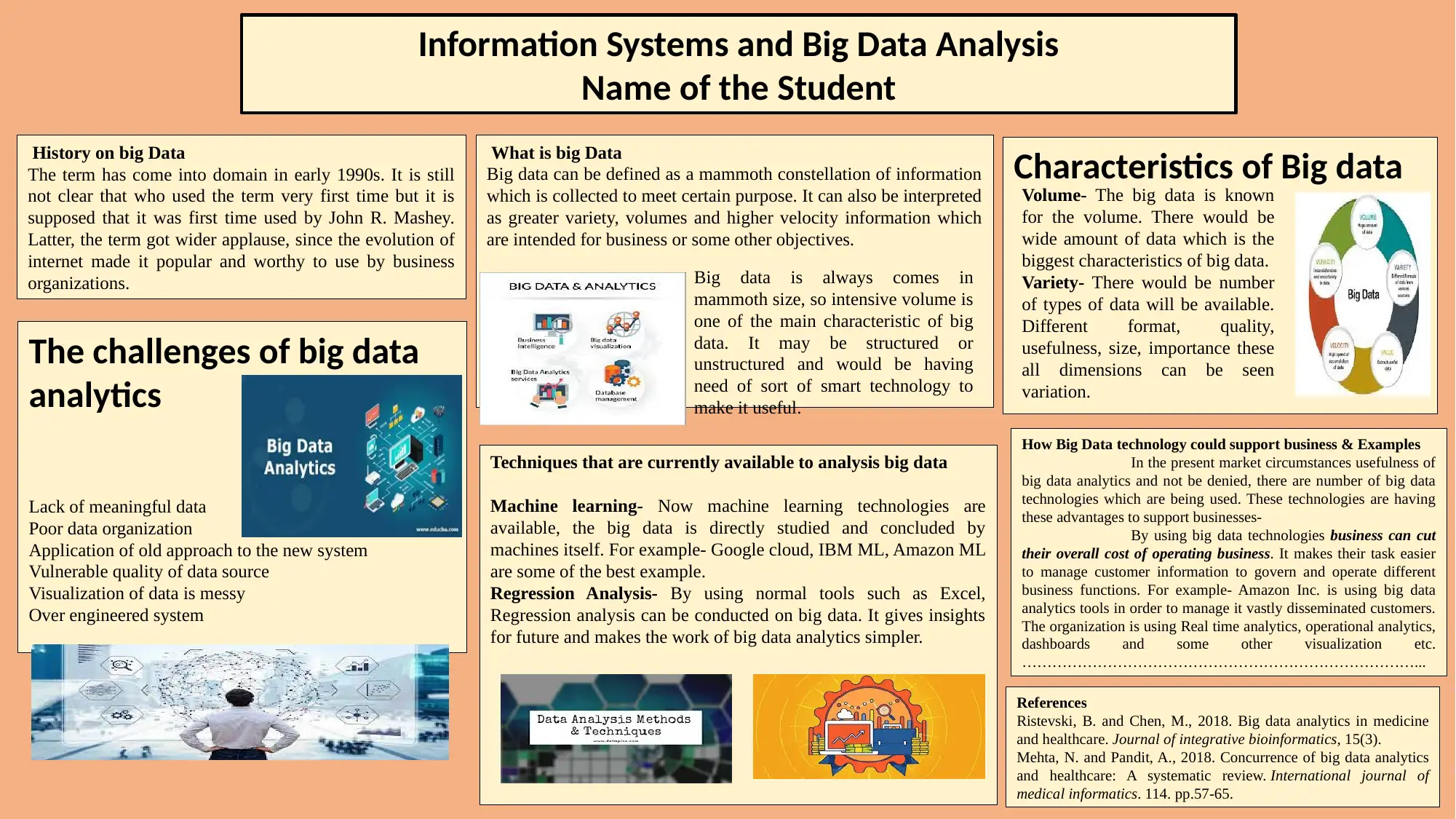Big Data Analysis for Business: Techniques and Examples
VerifiedAdded on 2023/06/10
|1
|517
|217
Project
AI Summary
This project, submitted for the BMP4005 Information Systems and Big Data Analysis module, delves into the realm of big data. The assignment begins by defining big data and outlining its core characteristics, such as volume, variety, and velocity. It then explores the challenges inherent in big data analytics, including data quality, organization, and the application of older approaches to new systems. The project also examines current techniques for analyzing big data, such as machine learning and regression analysis, providing examples like Google Cloud and Excel. Furthermore, it details how big data technology supports business objectives, with examples like Amazon Inc.'s use of real-time analytics and dashboards to manage customer information. The project includes a poster presentation summarizing the research findings, and a 1500-word paper providing a comprehensive overview of the topic, referencing relevant academic sources.



![[object Object]](/_next/static/media/star-bottom.7253800d.svg)